| Umělec magazine 2009/1 >> SpaceStrategies An answer to the challenges of the contemporary city? | List of all editions. | ||||||||||||
|
|||||||||||||
SpaceStrategies An answer to the challenges of the contemporary city?Umělec magazine 2009/101.01.2009 Elisa T. Bertuzzo, Günter Nest | urbanism | en cs de es |
|||||||||||||
|
Writing about cities is indeed a modern phenomenon. It has been that way ever since the 21st century was declared the “century of urbanism,” ever since it was confirmed that every second person lives in an urban agglomeration and that soon more than half of humanity will be city-dwellers. But also, ever since the framework for thinking about globalization was shifted by Saskia Sassen to the idea of “global cities”—economically linked and erected upon production and consumption—more and more publications and articles reflect upon the “city.”
Contemplating the city invokes answers to the question, what the “city” means, that are ever more nebulous. This should make us pause for reflection. One escape from this labyrinth of definitions could be identifying the city with space. But why precisely space, this (put in Kantian terms) pre-condition of human thought, a notion which philosophers have clashed over for generations; how, exactly, could space cast any light on this discussion of the city at all? For what is space? How do you define city-space? This question can only produce contradictory answers when approached in terms of the gnoseological disputations of the philosophers. Consider the traditional differentiation between open and private space—the street as the platform of social interaction on the one hand, and as the platform of the individual, personal, emotional life on the other. This differentiation has become entirely obsolete in an age of all-encompassing urbanization, migration and privatization. What is the “open” value of a street that is regulated by the police, spied upon by security cameras, abused by the private automobile as its own “personal” space? What is emotional and private in the interior of the many rebuilt, re-adapted, partially adapted buildings of Europe’s central cities, which no longer host family life, but only office life? Has the question of space and city become irrelevant in post-structuralist relativism? Henri Lefebvre, one of the great opponents of post-structuralism, wrote that “Space is produced, and the process of this production creates the city.” This conception extends beyond a simple materialistic interpretation. For it is not so much a question of the physical assembling of locations and places, but more and more “space” is understood as the sum total of the intermingled phenomena and production processes that create the city and the urban environment through their interactions. In a postmodern age, as Lefebvre recognized, the city is not a firm structure arising from a system of goods-production which rests upon traditional hierarchies. In La production de l’espace, he wrote that, increasingly, we can speak of a society-wide process of global urbanization, which on account of its process-grounded character as much as its inherent “unfinishedness” follows a path that can never be “observed” or predicted. Here, Lefebvre was confronted with a contradiction. Can one ever engage the city with research? The classic observations of the city, which started with Max Weber and continued much later with Georg Simmel and Louis Wirth, that led to essential realizations for the entire discipline of sociology would no longer seem appropriate—at least not without admitting an inability to observe the process of the “city.” The “city” exists in space, and all that is social develops from within space as well. Michel Foucault’s conception of the spatial turn that has steered the focus of cultural scholarship away from time and towards space is no longer the only explanation for this realization. In fact, this realization has much more in common with Lefebvre’s theories of the “production of space” in presenting a useful, yet hardly all-encompassing principle for future urban research and sociology. Conceptualizing “space” or the “city” as a process is based in three specific realms. In the physical realm are the material components of cities (buildings, infrastructure, institutions, etc.), as well as the implied patterns of daily life. In the mental realm, space is analyzed as a cultural category imprinted as much by its religious, ritual and generally cultural instances as from the activities of architects and urban planners. Finally, in the social realm there is the “social space” that is the experience of quotidian practicalities and human interaction, and offers within itself the potential of realizing a socially-negotiating individual. What is special in this theory is the interlinking of all three realms, which in their very existence depend upon one another and concomitantly must be understood as equally essential and synchronically active. The significance of this theory for researchers and practitioners is that it poses the challenge of unifying the most varied aspects of socio-political life - aspects that are still typically examined in isolation. The lack of an observational method—one that is simultaneously attentive to the society, culture and physical-infrastructure of cities as they become increasingly complex—is a serious detriment to the progress of contemporary urban sociology and planning. Then again, there have not been many concrete attempts to present a solution to this problem. A contradiction comes about when considering the stated goal of many experimental and developmental projects moving towards the inter- or multi-disciplinary. Unfortunately, the methods associated with studying the social, cultural and physical aspects of cities tend to be merely juxtaposed in the research process. This produces artists who do little more than articulate visual representations of the interrelations analyzed by scholars, sociologists and economists. A critique can be directed at this paradox. The failure of the promoted and yearned-for interdisciplinary work in an epoch of pervasive specialization, in which the danger is inevitable that complexity will be reduced and the enterprise descend into simplification. Alternatively, the arts—already on the way towards a thorough “economization” thanks to increasing competitive pressure in a glutted art market—are enticed into developing strategies instead of communication, pedagogy and propaganda. Is this all that the arts and artists today can contribute to the discourse of a pluralistic, democratic and open society? The instructors at the Kunsthochschule Berlin-Weißensee are well-aware of the problem. For many years, the set curricula for artistic education—and this is true for architectural pedagogy as well—has produced many excellent graduates who nonetheless lack the necessary instruments for analyzing the phenomena of contemporary society and, most importantly, for articulating them. As a result, artists are condemned to an involuntary isolation from what is actually happening. The new postgraduate “SpaceStrategies” program at the Kunsthochschule Berlin-Weißensee is one project that has been undertaken to counteract this deficiency. This two-year degree program is aimed at graduates of diverse university programs, border-jumpers and lateral thinkers who wish to expand their creative and theoretical horizons. Here, they have the ability to work with themes that equally reflect their individual artistic standpoints, current scholarly concerns and contemporary social processes in equal measure. The goal of the curriculum is to enable artists to develop creative and cooperative abilities that relate to the cultural meaning of public actions. The specific content consequently contains media opportunities for spatially relevant themes on the border between art and scholarship.
01.01.2009
Recommended articles
|
|||||||||||||
|
04.02.2020 10:17
Letošní 50. ročník Art Basel přilákal celkem 93 000 návštěvníků a sběratelů z 80 zemí světa. 290 prémiových galerií představilo umělecká díla od počátku 20. století až po současnost. Hlavní sektor přehlídky, tradičně v prvním patře výstavního prostoru, představil 232 předních galerií z celého světa nabízející umění nejvyšší kvality. Veletrh ukázal vzestupný trend prodeje prostřednictvím galerií jak soukromým sbírkám, tak i institucím. Kromě hlavního veletrhu stály za návštěvu i ty přidružené: Volta, Liste a Photo Basel, k tomu doprovodné programy a výstavy v místních institucích, které kvalitou daleko přesahují hranice města tj. Kunsthalle Basel, Kunstmuseum, Tinguely muzeum nebo Fondation Beyeler.
|








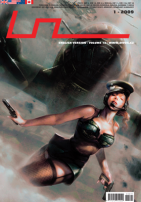





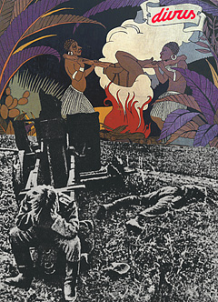











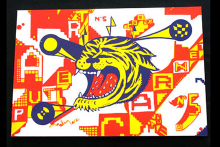
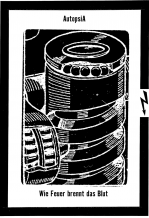
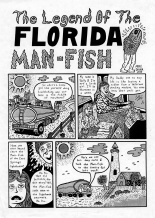
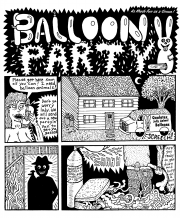


 We Are Rising National Gallery For You! Go to Kyjov by Krásná Lípa no.37.
We Are Rising National Gallery For You! Go to Kyjov by Krásná Lípa no.37.
Comments
There are currently no comments.Add new comment